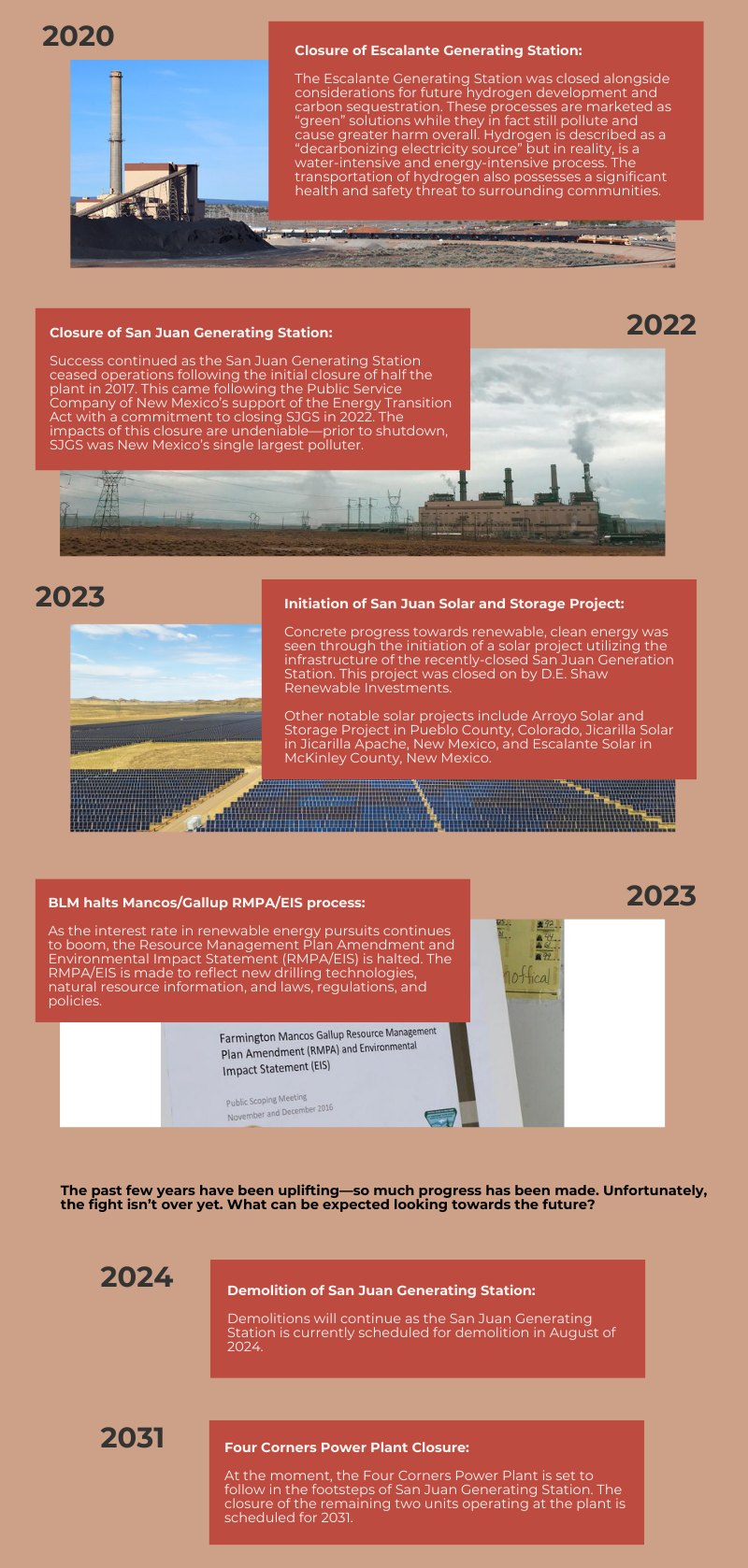Historic reliance on fossil fuels has faltered in recent years. What comes next? Can the Four Corners diversify from coal to renewables?
Let’s talk about energy transition!
More likely than not, the first word that comes to mind when you think of energy is something along the lines of oil, gas, or coal. While these are certainly energy sources, and widespread ones at that, these forms of energy emit greenhouse gasses, like carbon dioxide and methane, when they are produced and consumed. These emissions are costly to the environment and to human health, making emission reduction a prime focus of environmental and social justice organizations across the world. Here in the Four Corners, we are in the midst of an energy transition towards clean energy.
What is clean energy?
Clean energy sources are zero emission sources that do not pollute the environment or surrounding communities. Clean energy is often used as an interchangeable term with renewable energy, energy from natural sources that are replenished as they are used, meaning they never run out. Some of the most common examples of clean energy are wind and solar energy, which harvest the ever-constant winds and sun available on Earth. These sources, however, vary in success depending on the natural resources of an area. Luckily for us, the Four Corners region is a prime spot for solar and wind energy development. New Mexico is a particularly great candidate because of the abundant sunlight and transmission infrastructure from previous eras of energy development.
So why hasn’t the transition to clean energy happened? Capitalism, greed, politics—you name it. At the end of the day, historical energy development was fueled by economics, and extractive industries were a lucrative business in the Four Corners region. Today, the economics and social and environmental impacts are changing. Non-renewables have dominated the narrative for decades, and it’s difficult to change the narrative…but not impossible.
Clean energy is more than a solution for emissions reductions. A complete transition to clean energy also means the pursuit of equity for historically mistreated indigenous communities. It means addressing the impacts that wildlife in the Four Corners have faced, and working to minimize future impacts. It means cleaning up orphaned oil and gas well sites that pollute surrounding communities and prolong health impacts. It means reclaiming the facilities of expired power plants for clean development. It means new and diverse jobs for local community members. It means all of this and so much more.
It can be hard to grasp the scope of energy transition. The following timeline briefly outlines the history of the energy transition in the Four Corners from coal to renewables, and looks into what the future may hold.

Let's go back in time.
This story begins in the Four Corners region of the United States, an area with an extensive history in energy development. Located at the meeting point of Colorado, New Mexico, Utah, and Arizona, the Four Corners area has been a major component of the energy industry since the 19th century. Early white settlers such as E.L. Goodridge determined the potential for oil and gas development in the late 1800s, but did not immediately flourish. Coal mined near Durango, Colorado contributed to the mining rush and led to further discovery of natural gas, giving the region increased recognition. In the 1920s, Four Corners energy development started to take off.






